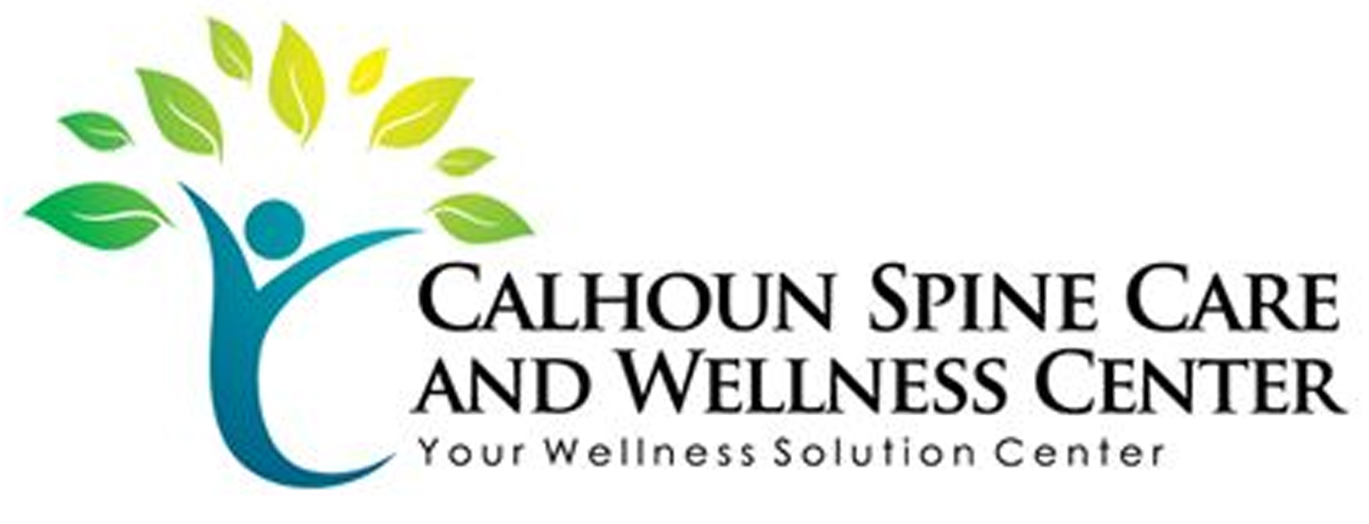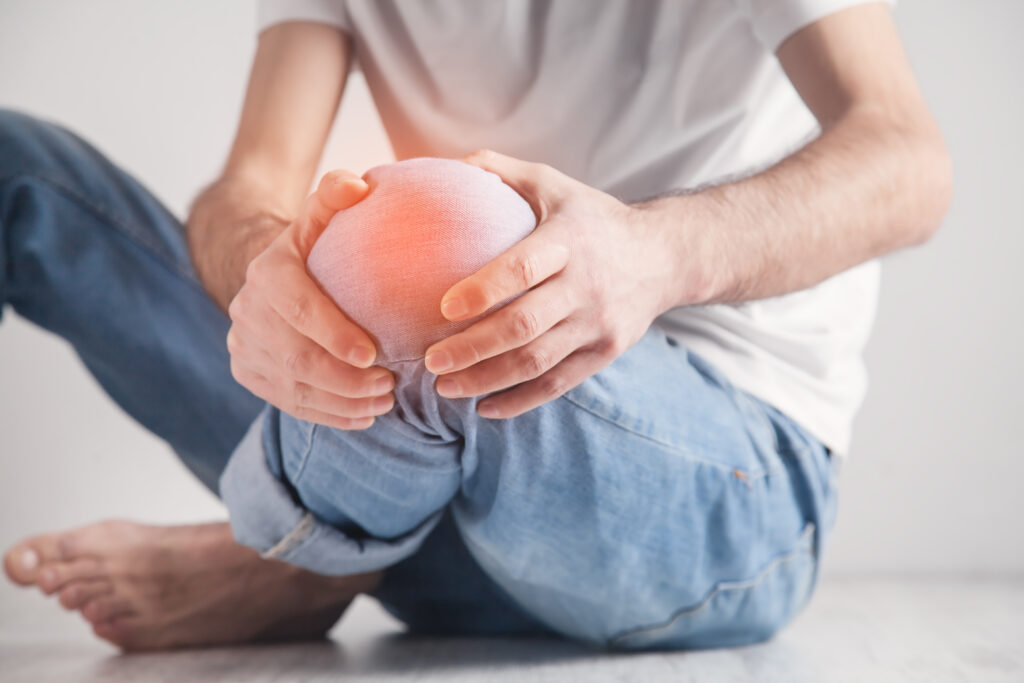If you're looking to enhance your flexibility, it's important to approach it with a structured plan. You can start by incorporating dynamic stretching techniques before your workouts, which can prepare your muscles for movement. After your exercise, static stretching becomes vital to improve your overall range of motion. But that's just the beginning; there are several authentic methods you might not have considered yet. By exploring these options, you could transform your flexibility routine in ways you hadn't imagined. Curious about what these methods entail?
Dynamic Stretching Techniques
Dynamic stretching techniques are essential for warming up your muscles and improving flexibility before a workout. Unlike static stretching, which involves holding a position, dynamic stretches involve movement, helping to increase blood flow and mobility. By incorporating these techniques into your routine, you prepare your body for the physical demands ahead.
Start with leg swings, where you stand on one leg and swing the opposite leg forward and backward. This exercise not only loosens your hip joints but also engages your core. Aim for 10 to 15 swings on each leg.
Next, try walking lunges. Step forward into a lunge position, ensuring your knee doesn't extend past your toes. Alternate legs for about 10 lunges, focusing on your form.
Arm circles also work well for warming up your upper body. Extend your arms out to the sides and make small circles, gradually increasing the size. After about 30 seconds, switch directions.
Another effective move is the high knee march, where you lift your knees toward your chest while walking forward, engaging your hip flexors and core.
Lastly, don't forget torso twists. Stand with your feet shoulder-width apart and gently twist your upper body side to side, which helps loosen your spine and improve your range of motion.
Aim to spend about 5 to 10 minutes on these dynamic stretches, and you'll feel more agile and ready for your workout.
Incorporate Yoga Practices
Incorporating yoga into your routine can greatly boost your flexibility and overall well-being.
You'll discover essential poses that target different muscle groups and learn tips for making yoga a daily habit.
Let's explore the benefits and practices that can enhance your flexibility journey.
Benefits of Yoga
When you practice yoga regularly, you release a multitude of benefits that extend far beyond flexibility. First and foremost, yoga enhances your overall physical strength. As you hold various poses, you engage multiple muscle groups, building endurance and stability. This newfound strength can improve your performance in other physical activities and everyday tasks.
Additionally, yoga promotes mental clarity and reduces stress. Through mindful breathing and meditation techniques, you learn to calm your mind, which can lead to improved focus and emotional well-being. This mental resilience can help you navigate life's challenges with a more balanced perspective.
Another significant benefit is enhanced balance and coordination. Many yoga poses require you to engage your core and maintain stability, which translates into better balance both on and off the mat.
Finally, practicing yoga encourages a deeper connection between your body and mind. This awareness helps you listen to your body's needs, fostering a healthier lifestyle and preventing injury.
Essential Poses to Try
To enhance your flexibility and overall well-being, trying out key yoga poses can make a significant difference.
Begin with the Downward-Facing Dog. This pose stretches your hamstrings, calves, and spine, creating a solid foundation for flexibility. As you engage in the pose, feel the lengthening of your body.
Next, incorporate the Forward Bend. Stand tall, then hinge at your hips, reaching toward your toes. This pose not only stretches your hamstrings but also promotes relaxation. You'll notice a gradual increase in flexibility with consistent practice.
The Butterfly Pose is another essential. Sit on the floor, bringing the soles of your feet together and letting your knees fall outward. This opening stretch enhances hip flexibility and prepares your body for deeper poses.
Finally, try the Pigeon Pose. It targets your hips and glutes, allowing for a deep stretch. As you breathe into the pose, focus on releasing tension and embracing the stretch.
Incorporating these essential poses into your routine will help you build flexibility over time.
Daily Practice Tips
A consistent daily practice can dramatically enhance your flexibility and overall yoga experience. By dedicating just a little time each day, you can notice significant improvements in how your body feels and moves.
Here are some simple tips to incorporate into your daily routine:
- Set a specific time: Choose a time that works for you, whether it's morning or evening, and stick to it.
- Start small: If you're new to yoga, begin with just 10-15 minutes of practice each day, gradually increasing the duration.
- Focus on breath: Remember, your breath is your guide. Incorporate deep breathing into your poses to enhance relaxation and flexibility.
- Vary your routine: Mix different poses each day to target various muscle groups and keep things interesting.
- Listen to your body: Pay attention to how you feel. Don't push yourself too hard; ease into deeper stretches as your body allows.
Regular Foam Rolling
Regular foam rolling can greatly enhance your flexibility by releasing muscle tension and improving blood flow.
To get the most out of your sessions, it's essential to use the right techniques and target specific areas.
Benefits of Foam Rolling
Foam rolling offers numerous benefits that can greatly enhance your flexibility and overall performance. By incorporating this simple technique into your routine, you can experience a range of positive effects that will help you achieve your fitness goals.
Here are some key benefits of regular foam rolling:
- Increased Blood Flow: Foam rolling helps improve circulation, delivering more oxygen and nutrients to your muscles.
- Reduced Muscle Soreness: It aids in alleviating post-workout soreness, allowing you to recover faster and get back to training sooner.
- Improved Range of Motion: Regular use can enhance your flexibility by loosening tight muscles and fascia.
- Enhanced Muscle Performance: By reducing tension and improving elasticity, foam rolling can lead to better overall muscle performance.
- Stress Relief: The process can be relaxing, helping to reduce stress and promote a sense of well-being.
Incorporating foam rolling into your routine not only boosts your flexibility but also supports your overall fitness journey.
Techniques for Effective Rolling
Mastering effective rolling techniques can greatly enhance your foam rolling experience and boost your flexibility gains.
Begin by selecting the right foam roller for your needs—choose a softer roller for beginners and a firmer one for more intense pressure. When you're ready to roll, start with targeted areas like your calves, hamstrings, and quads.
Position the roller beneath the muscle you want to work on, and use your body weight to apply pressure. Roll slowly, moving back and forth over the muscle for about 30 seconds to 1 minute. If you find a tender spot, pause and hold that position for 20-30 seconds to release tension.
Keep your movements controlled and steady; avoid bouncing or using jerky motions. Adjust your body angle to reach different muscle fibers; for instance, turning your leg slightly can help you target your IT band.
Incorporate deep breathing while you roll to relax your muscles further.
Finally, remember to hydrate afterward, as foam rolling can release toxins from your muscles. With consistent practice, these techniques will help you maximize your foam rolling benefits and enhance your overall flexibility.
Incorporating Into Routine
Incorporating foam rolling into your routine can considerably enhance your flexibility and overall recovery. By making foam rolling a regular part of your schedule, you'll not only alleviate muscle tension but also improve blood flow and mobility.
Here's how to seamlessly integrate it into your daily life:
- Set a Schedule: Dedicate specific days and times for foam rolling, whether it's after workouts or during rest days.
- Start Small: Begin with just 5-10 minutes of rolling to prevent overwhelm and gradually increase the duration as you get comfortable.
- Target Key Areas: Focus on tight areas like your quads, hamstrings, and back to maximize benefits.
- Combine with Stretching: Use foam rolling before or after your stretching sessions to enhance flexibility further.
- Listen to Your Body: Pay attention to how your muscles respond; adjust the pressure and duration based on your comfort level.
Static Stretching Routines
A consistent static stretching routine can greatly improve your flexibility and overall physical performance. It's important to dedicate time after your workouts or during your day to perform these stretches. Static stretching involves holding a stretch for a specific period, usually between 15 to 60 seconds, which allows your muscles to relax and lengthen.
Start with major muscle groups, such as your hamstrings, quadriceps, and hip flexors. For example, while seated, extend one leg and reach for your toes, holding the stretch until you feel a mild pull. Switch to the other leg and repeat. You can also target your upper body; try standing and gently pulling one arm across your chest, holding it with the opposite hand.
Aim for at least 5 to 10 minutes of static stretching, focusing on your breathing. Inhale deeply, and as you exhale, ease into the stretch a bit more. This practice not only enhances flexibility but also helps in muscle recovery. Remember, never push yourself into pain; stretching should feel comfortable.
Incorporate a variety of stretches to keep your routine engaging. You might want to add stretches for your back, shoulders, and calves as well.
Consistency is key; make this routine a part of your weekly schedule. Over time, you'll notice improvements in your flexibility, which can lead to better performance in your activities and reduced risk of injury.
Warm Up Before Activities
Before jumping into any activity, it's essential to warm up your muscles properly.
Dynamic stretching is key for increasing flexibility and preventing injuries, so you'll want to incorporate effective warm-up exercises.
Timing your warm-up right can also make a big difference in your performance, so don't skip this important step!
Importance of Dynamic Stretching
Dynamic stretching is essential for preparing your body for physical activities, as it boosts blood flow and increases your range of motion.
Unlike static stretching, dynamic stretches involve movement, helping to activate your muscles and joints effectively. This type of warm-up can greatly enhance your performance and reduce the risk of injury.
Here are some key benefits of incorporating dynamic stretching into your routine:
- Improves flexibility: Engaging in dynamic stretches helps increase your flexibility, making it easier to move through your full range of motion.
- Enhances athletic performance: By warming up your muscles, you'll be better prepared for explosive movements and high-intensity activities.
- Increases heart rate: Dynamic stretching elevates your heart rate gradually, ensuring your body is ready for more strenuous exercise.
- Prepares your mind: This warm-up technique helps you focus and mentally prepares you for the tasks ahead.
- Reduces injury risk: Properly warmed-up muscles are less susceptible to strains and tears, keeping you safe during your workout.
Incorporating dynamic stretching into your warm-up routine can make a considerable difference in your overall performance and well-being.
Effective Warm-Up Exercises
Warm-ups set the stage for a successful workout, and incorporating effective exercises can maximize your performance. Start with dynamic stretches like arm circles and leg swings to increase blood flow to your muscles. These movements prepare your body for more intense activity and help prevent injuries.
Next, consider incorporating mobility drills such as torso twists and hip openers. These exercises improve your range of motion, making it easier to perform complex movements during your workout. Spend about 5-10 minutes on these drills, focusing on smooth and controlled movements.
Don't forget to include sport-specific warm-ups. If you're running, practice high knees and butt kicks to mimic the motions you'll use. For strength training, perform bodyweight squats or lunges to activate your major muscle groups, ensuring they're ready for more strenuous work.
Finally, always listen to your body. If something feels tight or uncomfortable, spend extra time on that area. A thorough warm-up not only enhances flexibility but also boosts your overall performance, allowing you to get the most out of your workout.
Timing Your Warm-Up
Timing your warm-up is essential for optimizing your performance and preventing injuries. The right timing can make all the difference in how your body responds to activity. Ideally, you should start your warm-up about 10 to 15 minutes before engaging in any physical activity. This gives your body the chance to gradually shift from rest to movement, improving blood flow and flexibility.
Here are some key points to take into account when timing your warm-up:
- Duration: Aim for a warm-up lasting 10-15 minutes.
- Intensity: Keep it light to moderate; you're prepping, not exhausting yourself.
- Specificity: Tailor your warm-up to the activity you're about to do, focusing on relevant muscle groups.
- Environment: Reflect on the temperature; a colder setting may require a longer warm-up.
- Listen to Your Body: Pay attention to how you feel; if you're tight or stiff, extend your warm-up.
Focus on Breathing
While you may be enthusiastic to plunge into flexibility exercises, focusing on your breathing is just as vital. Proper breathing not only helps you relax but also enhances your overall performance during stretches. When you breathe deeply, you increase oxygen flow to your muscles, allowing them to stretch more effectively. This is essential for achieving greater flexibility.
Start by finding a comfortable position, whether standing or seated. As you begin your routine, take a moment to center yourself. Inhale deeply through your nose, allowing your abdomen to expand. Hold that breath for a moment before exhaling slowly through your mouth. This rhythmic pattern helps calm your mind and prepares your body for movement.
As you stretch, synchronize your breath with your movements. Inhale as you prepare to stretch, and exhale as you move into the stretch. This technique encourages a deeper release in your muscles and can prevent tension from building up.
If you find yourself holding your breath during a particularly challenging stretch, gently remind yourself to focus on your breathing again.
Engage in Pilates
Pilates can be a game-changer for your flexibility journey. This low-impact exercise method emphasizes controlled movements and core strength, making it an excellent choice for enhancing your flexibility.
Whether you're a beginner or more advanced, Pilates offers a range of exercises that can help you stretch and strengthen your muscles simultaneously.
When you engage in Pilates, you'll notice several benefits that contribute to improved flexibility:
- Focus on Alignment: Each exercise encourages you to maintain proper alignment, which can lead to better overall flexibility.
- Full-Body Engagement: Pilates works multiple muscle groups, ensuring that no area is neglected, enhancing your range of motion.
- Mind-Body Connection: The practice promotes mindfulness, helping you become more aware of your body and how it moves.
- Increased Core Strength: A strong core provides stability, allowing for deeper stretches and improved flexibility.
- Variety of Movements: With numerous exercises available, you can target specific areas where you want to increase flexibility.
Incorporating Pilates into your routine doesn't require a lot of time, and you can do it at home or in a class setting.
Aim for at least two to three sessions a week to really feel the benefits. As you progress, you'll find that your body becomes more supple and resilient.
Embrace the challenge, and you'll be on your way to a more flexible you!
Cross-Training Activities
Cross-training activities can greatly boost your flexibility and overall fitness by incorporating diverse movements into your routine. By mixing different types of workouts, you can target various muscle groups and enhance your body's overall range of motion.
For instance, if you usually focus on strength training, adding yoga or swimming can markedly improve your flexibility. These activities require your muscles to stretch and lengthen, which helps prevent tightness and stiffness.
Consider incorporating activities like martial arts, dance, or cycling into your weekly regimen. Martial arts demand agility and flexibility, challenging your body in new ways. Dance not only enhances your flexibility but also improves your coordination and balance.
Cycling, while primarily a lower-body workout, can also improve hip flexibility if combined with proper stretching techniques.
Don't forget about activities like rock climbing or barre classes, which can further develop your flexibility and strength. Both require muscle engagement and stretching, allowing you to reach new heights in your flexibility journey.
Aim for variety in your workouts to keep things interesting and engaging.
When you cross-train, you also reduce the risk of injury by balancing your workouts and avoiding overuse. This holistic approach to fitness guarantees that you're not just improving flexibility but also building endurance and strength.
Maintain Hydration
Staying well-hydrated is essential for enhancing your flexibility and overall performance. When your body is properly hydrated, your muscles function more effectively, which can lead to improved flexibility.
Dehydration, on the other hand, can cause muscle stiffness and cramps, making it harder for you to stretch and achieve your flexibility goals.
To maintain proper hydration, consider these tips:
- Drink water regularly: Don't wait until you feel thirsty. Keep a water bottle handy and sip throughout the day.
- Include hydrating foods: Foods like cucumbers, oranges, and watermelon are high in water content and can contribute to your overall hydration.
- Monitor your urine color: A light yellow color usually indicates good hydration, while darker shades may signal the need for more fluids.
- Adjust for activity levels: If you're exercising, increase your water intake before, during, and after your workouts to replenish lost fluids.
- Limit caffeine and alcohol: Both can lead to dehydration, so try to balance them with extra water.
Consistent Flexibility Goals
Setting consistent flexibility goals is essential for your progress and motivation. Without clear objectives, it's easy to lose focus and become discouraged. Start by identifying your current flexibility level and what you want to achieve. This could be anything from touching your toes to performing a full split. Make sure your goals are specific, measurable, attainable, relevant, and time-bound (SMART).
Once you've outlined your goals, break them down into smaller, manageable milestones. For example, if your aim is to improve your hamstring flexibility, set a goal to increase your stretch duration by a minute each week. This approach helps you track progress and celebrate small victories along the way, keeping your motivation high.
Consistency is key. Incorporate flexibility training into your routine at least three times a week. Create a schedule that suits your lifestyle, whether it's a morning routine or a post-work wind-down. Stick to it, and soon it'll become a habit.
Don't forget to reassess your goals periodically. As you progress, you might find that your initial targets need adjusting. Maybe you're ready to tackle more advanced stretches, or perhaps you need to focus on another area of your body.
Adjusting your goals keeps your training fresh and challenging.
Conclusion
By incorporating these ten authentic ways to enhance your flexibility, you'll not only improve your range of motion but also boost your overall performance in physical activities. Embrace dynamic stretching, practice yoga and Pilates, and don't forget the benefits of foam rolling. Stay hydrated, set achievable goals, and mix in cross-training activities to keep your routine fresh and exciting. With consistency and dedication, you'll see significant improvements in your flexibility and overall well-being.



